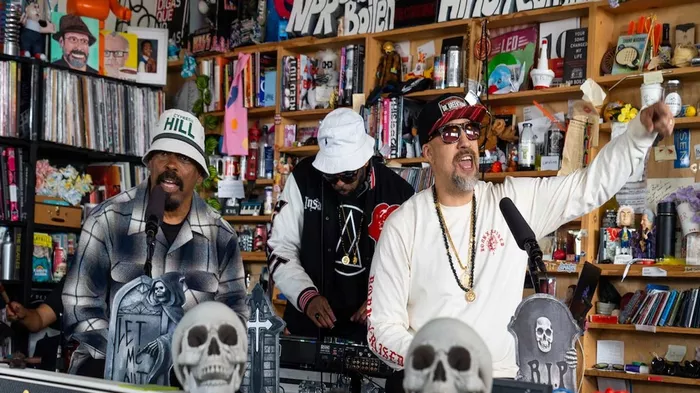In the vast landscape of hip hop music, instrumental hip hop stands out as a unique and captivating genre. Often overshadowed by its vocal-centric counterpart, instrumental hip hop offers a rich tapestry of sounds, rhythms, and emotions that speak volumes without uttering a single word. In this article, we delve into the essence of instrumental hip hop, exploring its origins, characteristics, and significance in the music world.
Origins and Evolution
Instrumental hip hop emerged in the late 1980s and early 1990s, parallel to the rise of traditional rap music. As DJs and producers began experimenting with sampling and beat-making techniques, they discovered the power of crafting instrumental tracks that captured the essence of hip hop without relying on vocals. Artists like DJ Premier, J Dilla, and Pete Rock became pioneers of the genre, laying the foundation for a new wave of instrumental creativity.
Throughout the 1990s and early 2000s, instrumental hip hop continued to evolve, incorporating elements of jazz, funk, soul, and electronic music. Producers embraced new technologies and production methods, pushing the boundaries of what was possible with samplers, drum machines, and synthesizers. The result was a diverse array of instrumental compositions that ranged from laid-back and atmospheric to gritty and hard-hitting.
Characteristics of Instrumental Hip Hop
At its core, instrumental hip hop is defined by its focus on rhythm, groove, and texture. Unlike traditional rap music, which places emphasis on lyrical content and vocal delivery, instrumental hip hop places the spotlight squarely on the music itself. Here are some key characteristics that distinguish instrumental hip hop:
Sample-Based Production: Sampling is a fundamental aspect of instrumental hip hop, with producers extracting snippets of sound from existing recordings and manipulating them to create new compositions. Whether it’s a drum break, a melodic riff, or a vocal snippet, samples serve as building blocks for instrumental hip hop tracks, providing texture and depth to the music.
Beat-Centric Arrangements: Instrumental hip hop is driven by its beats, which serve as the rhythmic foundation of the music. Producers often spend hours crafting intricate drum patterns and percussion loops, layering them with basslines, melodies, and other sonic elements to create dynamic and engaging compositions.
Emotional Resonance: Despite the absence of vocals, instrumental hip hop has a remarkable ability to convey emotion and atmosphere. Through the use of carefully selected samples, chord progressions, and arrangements, producers are able to evoke a wide range of feelings, from nostalgia and melancholy to joy and exhilaration.
Experimentalism and Innovation: Instrumental hip hop thrives on innovation and experimentation, with producers constantly pushing the boundaries of sound and style. From unconventional sampling techniques to avant-garde production methods, the genre embraces diversity and originality, welcoming new ideas and approaches with open arms.
Collaborative Spirit: Collaboration is a central tenet of instrumental hip hop, with producers often teaming up with musicians, DJs, and visual artists to create immersive and multidimensional experiences. Whether it’s a live performance, a collaborative album, or a multimedia project, instrumental hip hop thrives on the exchange of ideas and the fusion of different creative disciplines.
Significance and Influence
Instrumental hip hop may occupy a niche within the broader music landscape, but its influence extends far and wide. From underground beat scenes to mainstream pop culture, instrumental hip hop has left an indelible mark on the music world, shaping the sound of countless artists and genres.
One of the most significant contributions of instrumental hip hop is its role in redefining the producer as an artist in their own right. In traditional rap music, producers often take a backseat to vocalists, serving primarily as behind-the-scenes architects of the music. In instrumental hip hop, however, producers are front and center, celebrated for their creativity, skill, and vision.
Furthermore, instrumental hip hop has served as a breeding ground for innovation and experimentation, inspiring artists across genres to push the boundaries of what is possible with sound. From electronic music producers to indie rock bands, artists of all stripes have drawn inspiration from the rhythmic complexity, sonic texture, and creative freedom of instrumental hip hop.
Conclusion
In conclusion, instrumental hip hop is a dynamic and multifaceted genre that continues to captivate listeners and inspire artists around the world. With its emphasis on rhythm, groove, and creativity, instrumental hip hop offers a rich and rewarding musical experience that transcends language and culture. Whether you’re a seasoned hip hop aficionado or a casual music fan, instrumental hip hop is sure to leave a lasting impression with its infectious beats, evocative melodies, and boundless imagination.

